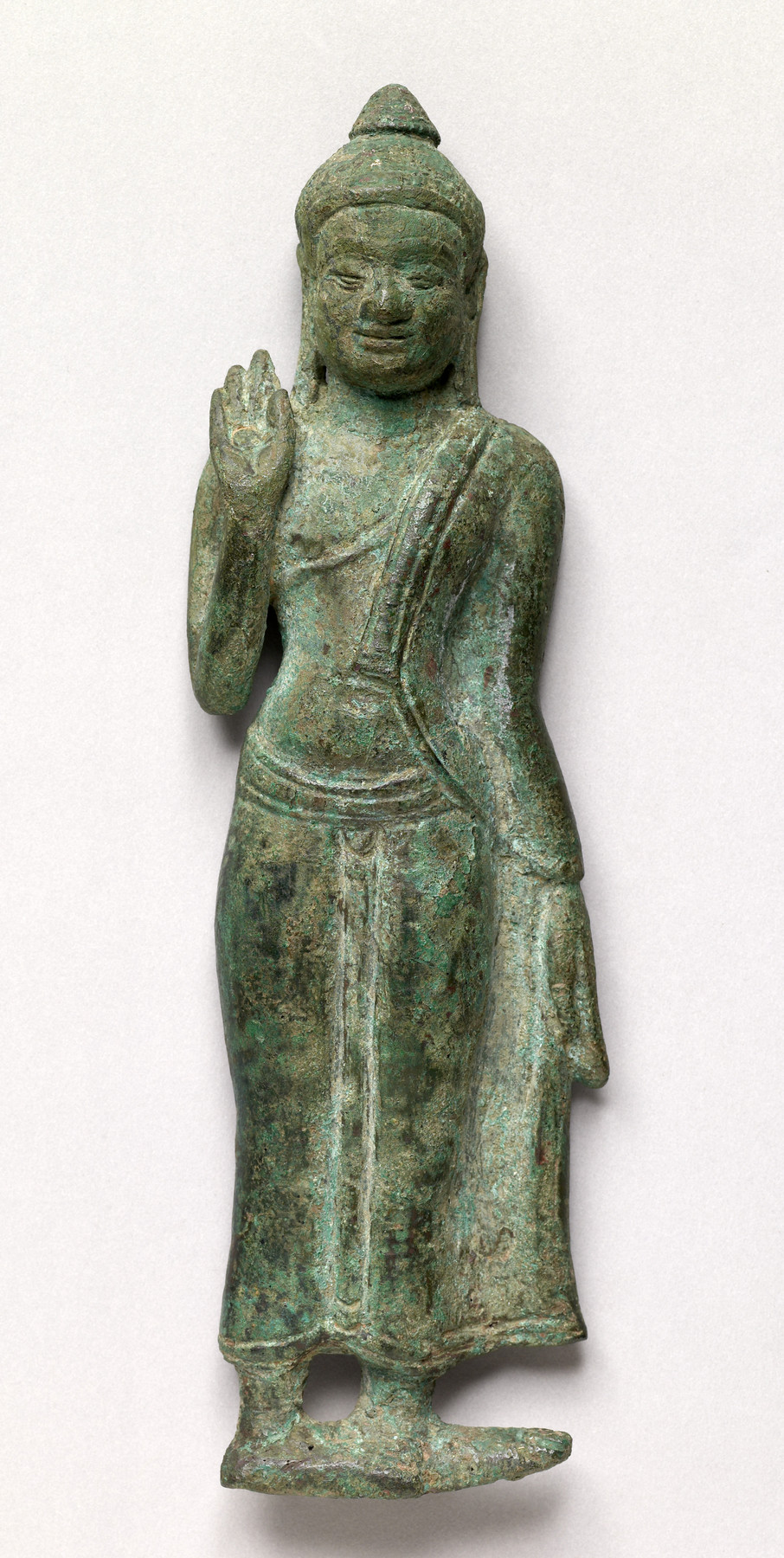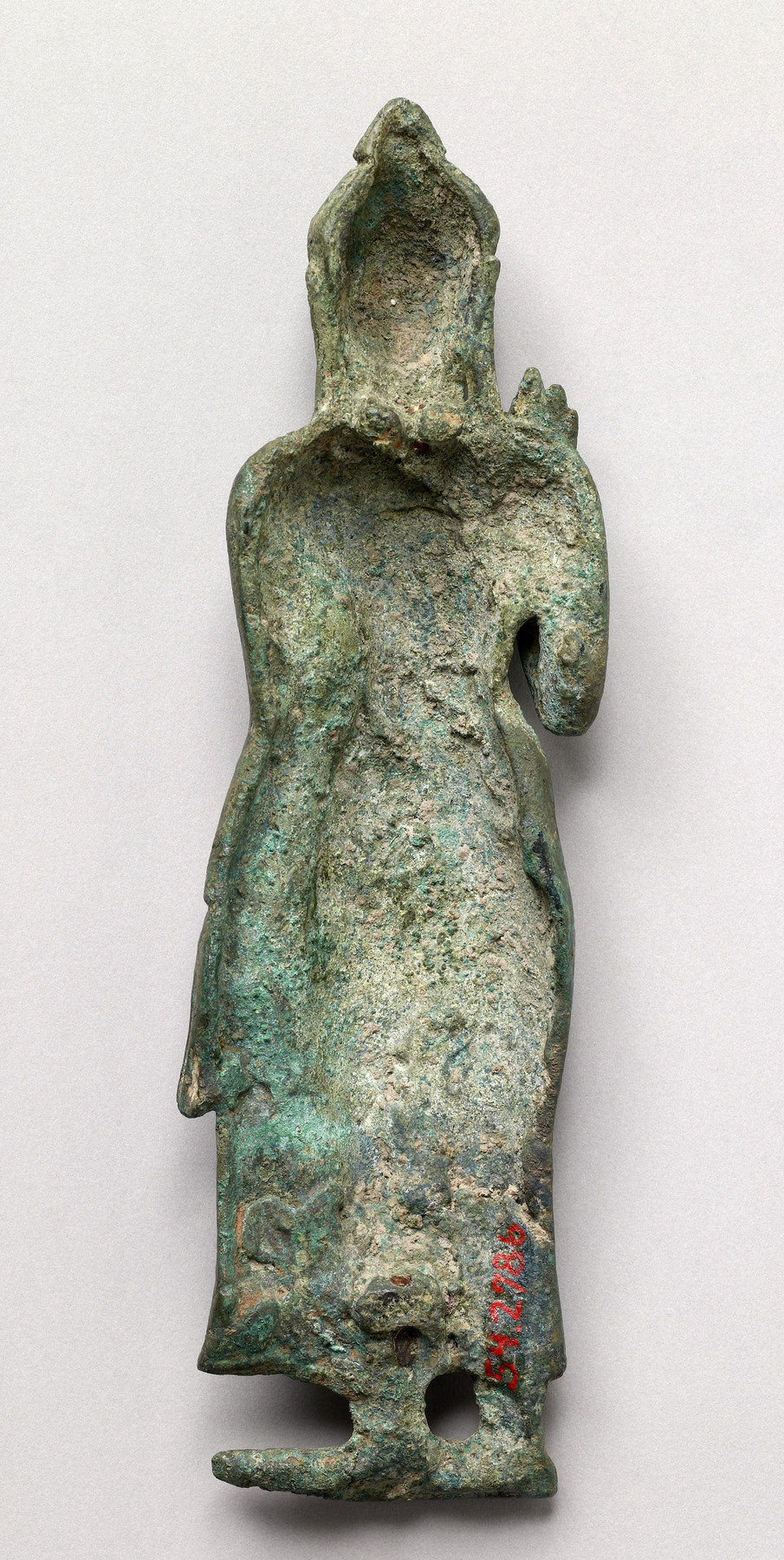Walking Buddha, in High Relief
(Southeast Asia )
This figure of the Buddha is characterized by a round face and thick, heavy eyebrows that join the nose to form a king of 'T.' Acquired in Lopburi, it was very likely made there.
This image is interesting in large part becasue of the light it appears to shed on the development of the walking Buddha. Originally attached to a backplate or frame, it might have been part of an altarpiece in which lesser images flank a central one. The walking Budha seems to be exemplifying a posture rather than illustrating a particular episode in the Buddha's life.
Inscription
Provenance
Provenance (from the French provenir, 'to come from/forth') is the chronology of the ownership, custody, or location of a historical object. Learn more about provenance at the Walters.
Lobpuri, Thailand; Alexander B. Griswold, Monkton, summer 1948, [presented to the Breezewood Foundation, December 1960, inv. no. 708]; Walters Art Museum, 1992, by bequest.
Exhibitions
| 1995 | Unearthly Elegance: Buddhist Art from the Griswold Collection. The Walters Art Gallery, Baltimore. |
Conservation
| Date | Description | Narrative |
|---|---|---|
| 4/26/2017 | Examination | Examined and treated for exhibition |
| 4/26/2017 | Examination | The lost wax cast leaded bronze Walking Buddha exhibited signs of active chloride corrosion or bronze disease. Local active spots were treated with a corrosion inhibitor, benzotriazole. |
Geographies
Thailand, Lopburi (Place of Origin)
Measurements
H: 8 9/16 × W: 2 1/2 × D: 1 3/16 in. (21.7 × 6.3 × 3 cm)
Credit Line
Bequest of A. B. Griswold, 1992
Location in Museum
Not on view
Accession Number
In libraries, galleries, museums, and archives, an accession number is a unique identifier assigned to each object in the collection.
In libraries, galleries, museums, and archives, an accession number is a unique identifier assigned to each object in the collection.
54.2786






